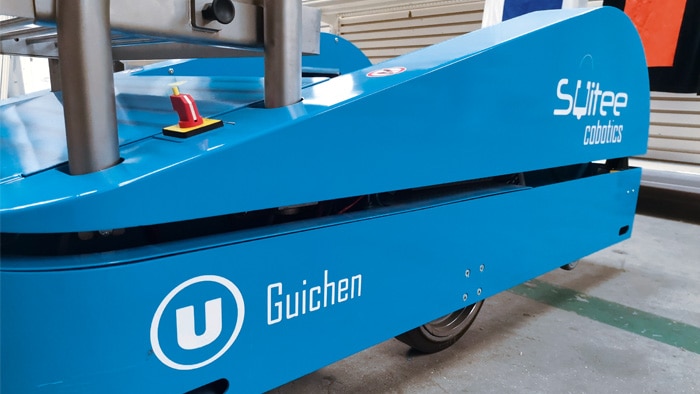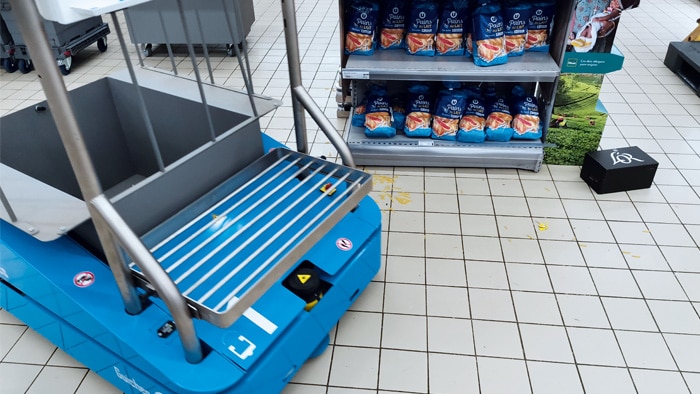Since the robot will be moving in confined areas, often along many customers, a very high level of safety must be achieved to avoid collisions and accidents.
 Mobile Robot Revolutionizes Work in Supermarkets
Mobile Robot Revolutionizes Work in Supermarkets

Case Study from | SICK
Following in the footsteps of Google, Pierre Legendre and Benjamin Loize caught the start-up bug in 2015 and focused their energies fully on innovation: Both worked as engineers at U GIE-IRIS in France on a solution to facilitate manual work in the drive-in branches of Système U supermarkets. This new way of shopping is becoming increasingly significant. However, it also increases the risk of back problems or exhaustion among staff due to the high physical strain of putting together the purchases. At the same time, cost-effectiveness plays an important role. Organization and productivity are the big challenges. For example, products are placed on the shelves by employees, but then removed by others for drive-in pickup.
The birth of SUitee Cobotics
Pierre Legendre and Benjamin Loize worked for two years on a project to aimed to reduce workload and increase the profitability of drive-in service. They suggested to company management that employees in the stores be provided with a life-size robot to assist them with particularly strenuous tasks, such as transporting heavy products to restock shelves or frequently moving merchandise between the warehouse and the sales area. Système U gave them free rein in implementing this autonomous assistance robot. In cooperation with other industry partners, they developed a mobile robot that was tested in various markets.
The two engineers presented their project to the shareholders and owners of Système U’. Their ideas were met with interest, but since the manufacture of mobile robots does not exactly fall within the core business of U GIE-IRIS, the innovative program was discontinued. So they were faced with a choice: Return to their earlier projects, or leave the company to create the mobile robots themselves?
Setting out on a new adventure with SICK
In March 2018, they decided to found their own start-up. Six months later, SUitee Cobotics sees the light of day. An agreement is made with Système U that Legendre and Loize will be allowed to use all the results of their previous project, enabling them to simply pick up where they left off. However, they soon discover that not everything is as ready as they thought – and they start all over again.
For two years, they rework the entire concept, from design and form to technology.


First-class equipment for the safety of us all
The mobile robot had to be introduced in the stores without any structural changes. That means marking lines on the ground as well as GPS antennas or transmission towers were out of the question. Instead, the robot had to be equipped with extremely precise sensor technology, because ultimately it should be equally capable of reaching a precisely defined goal on its own and of safely following a person.


The content & opinions in this article are the author’s and do not necessarily represent the views of RoboticsTomorrow
Comments (0)
This post does not have any comments. Be the first to leave a comment below.
Featured Product

